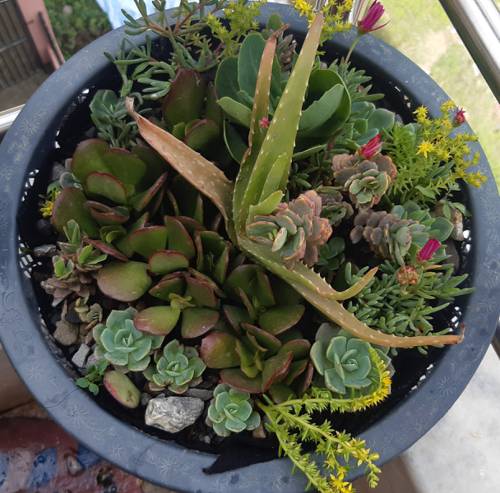
FAQ About Indoor Plant Eco-Compatibility Assessments

What is an indoor plant eco-compatibility assessment?
An indoor plant eco-compatibility assessment evaluates how well various indoor plant species integrate with specific home ecosystems. This assessment takes into account factors such as light, temperature, and humidity conditions, helping determine the most suitable plants for your indoor environment.

Why is it important to assess eco-compatibility for indoor plants?
Assessing the eco-compatibility of indoor plants is crucial because each plant species has specific needs that must be met for them to thrive. By aligning plants with appropriate environmental conditions—like light, temperature, and humidity—you can ensure healthier growth, better air quality, and reduce the likelihood of pests and diseases.

What factors are considered in an eco-compatibility assessment for indoor plants?
An eco-compatibility assessment for indoor plants considers several key environmental factors, including:
- Light Levels: The amount of natural or artificial light available in a space.
- Temperature: The range of temperatures plants will experience indoors.
- Humidity: The moisture level in the air which can affect plant health.
- Space and Size: The physical area available for plant growth.
- Air Quality: The presence of pollutants which some plants can filter more effectively than others.

How can light conditions affect the choice of indoor plants?
Light conditions are crucial for photosynthesis, which is how plants produce energy. Some plants need bright, direct sunlight to thrive, while others can prosper in low-light conditions. By understanding the light availability in your home, you can choose plants that are best suited to those conditions, resulting in healthier and more robust plant growth.

What indoor plants are suitable for low-light conditions?
Several indoor plants thrive in low-light conditions, making them ideal for areas with limited sunlight. Some of these plants include:
- Snake Plant (Sansevieria)
- ZZ Plant (Zamioculcas zamiifolia)
- Pothos (Epipremnum aureum)
- Peace Lily (Spathiphyllum)
These plants typically require less maintenance and adapt well to lower light, making them excellent choices for many indoor environments.

How does temperature influence plant compatibility indoors?
Temperature affects plant metabolism, growth rate, and ability to flower. Most indoor plants prefer a stable temperature range, typically between 60-75°F (15-24°C). Fluctuations outside this range can stress plants, leading to poor health or even death. Selecting plants that match the ambient temperature of your living space can help ensure their optimal growth.

Which indoor plants are best for humid environments?
In humid environments, tropical plants often perform well as they are naturally adapted to high moisture levels. Suitable choices include:
- Boston Fern (Nephrolepis exaltata)
- Bromeliads
- Philodendrons
- Peace Lily (Spathiphyllum)
These plants can handle and even thrive in the high humidity conditions often found in places like bathrooms or kitchens.

Can indoor plants improve air quality, and which ones are the most effective?
Yes, certain indoor plants can improve air quality by filtering pollutants such as benzene, formaldehyde, and trichloroethylene. Some of the most effective air-purifying plants include:
- Aloe Vera
- Spider Plant (Chlorophytum comosum)
- English Ivy (Hedera helix)
- Chrysanthemum (Chrysanthemum morifolium)
These plants not only add aesthetic value but also contribute to healthier indoor air.

How can I assess the humidity levels in my home for plant compatibility?
You can assess your indoor humidity levels using a hygrometer, a small and affordable device that measures relative humidity. Ideal humidity levels for most plants range from 40% to 60%. Additionally, certain signs such as wilting or browning leaf tips can indicate inappropriate humidity conditions for specific plants.

What are some challenges of maintaining indoor plants in dry environments?
In dry environments, challenges include maintaining adequate moisture levels for plants. Dry air can cause faster evaporation of soil moisture, leading to under-watering issues. It may also cause plants to dry out more quickly, particularly those that prefer humid conditions. Using humidifiers or placing water trays near plants can help alleviate these issues.

How do I choose indoor plants if my home experiences temperature fluctuations?
If your home experiences frequent temperature fluctuations, choose resilient plants that can withstand varying temperatures. Some plants such as succulents and certain types of cacti are highly adaptable and can manage temperature changes well. Always try to avoid drafts or direct exposure to heating and cooling vents, as these can further stress plants.

What is the role of artificial lighting in indoor plant eco-compatibility?
Artificial lighting can supplement natural sunlight and is particularly useful in areas where natural light is insufficient. Grow lights, including LED or fluorescent lights, can provide the full spectrum of light needed for photosynthesis, supporting plant growth in low-light environments. When using artificial lighting, ensure it mimics the natural day-night cycle to promote healthy plant development.

How can I determine the specific light needs of my indoor plants?
The specific light needs of indoor plants can be determined by understanding their native environment. For instance, tropical plants often require bright indirect sunlight, while certain succulents thrive in direct sun. Researching each plant's requirements and observing their health and growth in various light conditions can inform adjustments to their environment as needed.

Are there indoor plants that can survive in very cold indoor environments?
While many houseplants prefer mild temperatures, some can tolerate cooler environments. Plants like the Cast Iron Plant (Aspidistra elatior) and certain ferns can withstand lower temperatures. However, it's important to avoid exposing any indoor plant to freezing conditions, which can be detrimental to most species.

Can indoor plants contribute to the ecosystem by attracting beneficial insects?
Yes, some indoor plants can attract beneficial insects such as pollinators or natural predators of common houseplant pests. For example, flowering indoor plants can attract bees, and certain herbs can draw ladybugs that feed on aphids. This can create a small, balanced ecosystem within your home that supports plant health.

What are the benefits of acclimatizing new plants to indoor environments?
Acclimatizing new plants aids in their adjustment to different light levels, temperatures, and humidity of indoor environments compared to where they were grown. Gradually introducing new plants to their designated spot allows them to adapt without shock, thereby reducing stress and promoting healthier growth and development.

What common mistakes should be avoided when selecting indoor plants based on eco-compatibility?
Common mistakes include selecting plants based solely on aesthetics without considering the environmental conditions they require. Ignoring factors like humidity, temperature fluctuations, and light can lead to poor plant health. It’s essential to match plants with the right conditions or be prepared to adjust the environment to meet their needs.

Why might a plant thrive in one household but not another, even with seemingly similar conditions?
Subtle differences in lighting, humidity, air circulation, or even the microclimate created by furniture and other objects can affect plant health. Moreover, variations in watering practices and nutrient availability might also impact plants. Personalized observation and adjustment are often key to addressing these discrepancies.

How can indoor plant assessments benefit larger living spaces or office environments?
In larger spaces like homes or office environments, eco-compatibility assessments help in selecting plants that not only thrive but also enhance air quality, aesthetics, and worker productivity. Properly chosen plants can create a more engaging and healthy environment, fostering well-being and satisfaction.

Are there specific tools or kits available to help with conducting an eco-compatibility assessment for indoor plants?
Yes, various tools and kits can assist in conducting an eco-compatibility assessment. These may include light meters to measure light levels, hygrometers for humidity, and thermometers to monitor temperature. Some advanced kits might also provide soil moisture sensors and pH testing equipment. These tools can be invaluable for accurately assessing and maintaining ideal conditions for indoor plants.
